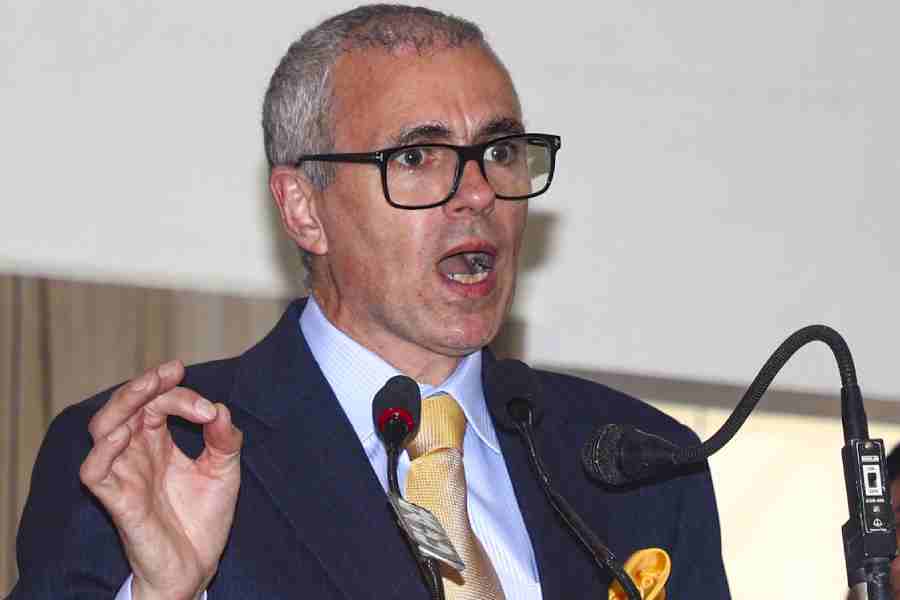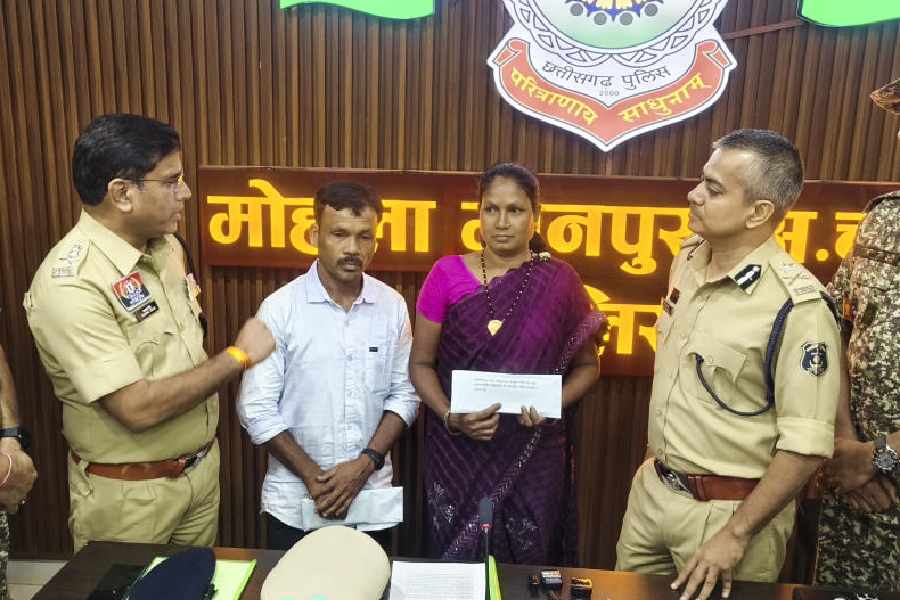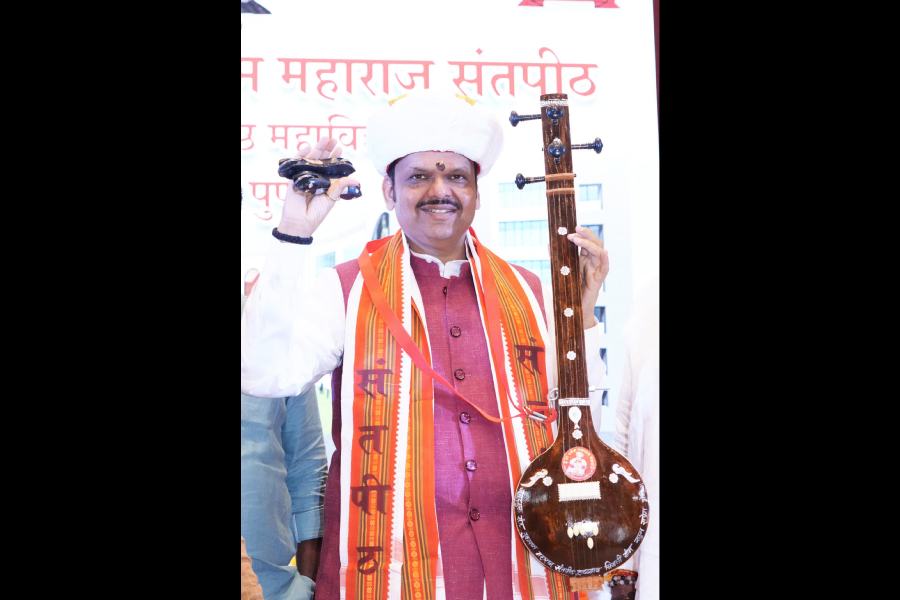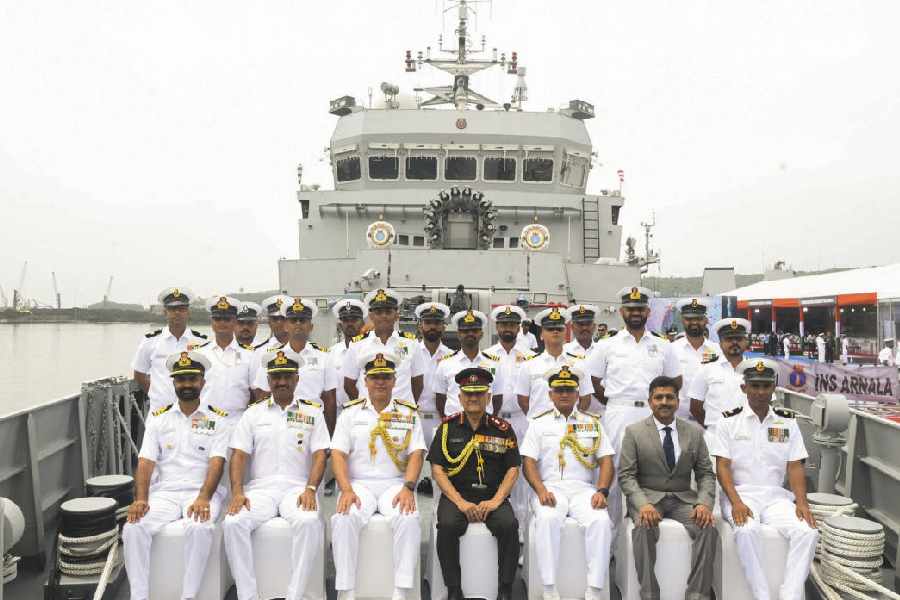 |
But if Bollywood is going Inglis with a vengeance (now we have one whole grammatically correct English sentence, though sprinkled with more letters than were strictly required, for films, like, yes, Singh is Kinng and we are not going to mention it ever again), TV is going Hindi. If Bollywood is pulling out all stops to cater to the Pappus Who Can or Can’t Dance, Saala, and the Mindblowing Mahiyas of the metros, with its personal brand of English, MTV is honouring people who can’t speak one word of the same language.
It means that it will not do if you know either English or Hindi alone, and that too, well. In order to catch the Ahluwalias of Bhatinda, the Mirchandanis of Delhi, the Yadavs of Patna, the Sens of Calcutta and the Shekhars of Bangalore, all in one net, both films and yuppie television channels are journeying in opposite directions, but towards each other, from too much Hindi or too much English, to arrive at a mean. It’s the same end. The End. Of English. And Hindi. As we know them.
So the Bollywood hero today is still the young college-goer, but really young, with real young hair, the nickname “Rats”, a girlfriend whom he calls “Meow” and a vocab peppered with “dude” and “kewl”. Kewl, na? At the same time, the crowned king of Roadies 5.0 is Ashutosh Kaushik, who runs a dhaba in hometown Saharanpur, is a regular at his neighbourhood akhada and can’t speak a word of English. Yeh bhi kewl, na? If the Krazzy 4 song goes “Krazzy with a k…. that’s the way/Say k…r…a…zee…zee…y/ Do it anyway… just put the k…” (that’s the Kueen’s language in the former colony, that’s how the empire strikes back. Kool, na?), then one of the stringent rules of the Bigg Boss house is that inmates can speak in no language apart from Hindi. That made participant Jade Goody from the UK feel out of place. Cool, na? It’s unfortunate that Goody has been diagnosed with cancer, but it takes a lot — more than Shilpa Shetty definitely — to make her feel out of place. And if the host of a reality show reprimands an English-speaking contestant saying, “Hindi mein boliye,” or Malaika Arora Khan was constantly chided for breaking into English as a judge on Nach Baliye, then Akshay Kumar’s character in Namastey London has to spout a few lines in English in the climax to prove to ladylove Katrina Kaif that he isn’t a village bumpkin and is therefore worthy of her.
TRP is a desi word
Contrary to what it may look like, this makes excellent sense. Hindi has television rating points (TRPs) booming. “Hindi as a language on television is preferred because it is understood by the vast majority — be it the ‘with it’ crowd of the metros or the farmer in a small village in northern India. It optimises the reach of the show,” says Vaibhav Modi, creative director, Endemol, which adapted international shows like Fear Factor, Big Brother and American Idol for desi viewing.
Programmes like Roadies, Splitsvilla and Get Gorgeous may be “international” in theme, content and packaging, but the brief is native: to communicate in Hindi. “The aspiration level among the non-English speaking audience is high. Western concept shows in Hindi reach out to this audience,” says VJ turned actor Luke Kenny. Content is, well, Kinng (sorry!), but language is the key. Hindi is also the chosen medium for channels when it comes to promoting shows. The posters for the Roadies finals read Dost bana dushman and Kisme kitna hai dum.
 |
| A poster promoting the Roadies 5.0 finals |
The music channels had realised it in the early ’90s. “We came up with programmes like Made in India, retired ‘international’ VJs like Danny McGill and changed our storyboard to all things desi. And the move worked big time. Suddenly everyone was listening to us,” says Ashish Patil, general manager and vice president, MTV India. “Even as far back as [v] Popstars (2002), the content was in the national language,” says Saurabh Kanwar, vice president, content and communication of the STAR group-owned music channel.
Ironically, the rapidly changing face of Bollywood has made Hindi cool on television, a perfect fit for the yuppie channels. “The gloss may well be international, but the music at the end of the day is Salman Khan and Govinda because that is what everyone in this country loves. For the youth of today, Jaane Tu... Ya Jaane Na and Bachna Ae Haseeno are as much a reference point as Facebook and Orkut,” says Patil of MTV. Hindi is cool also because in Bollywood, it is laden with English. Or is English cool because it’s laden with Hindi? Which came first, chicken or egg?
Discovery of English
Never mind. What’s more pronounced than the move from English to Hindi on television has been Bollywood’s discovery of English, most spectacularly in the name of a film or the lyrics of a song. Pappu can’t dance, Zara zara touch me, You’re my lucky boy or Small town girl — they are chart-toppers. Hindi and English come together — from Jab We Met, through Life In A…Metro to Kismat Konnection. Out of the 48 Bollywood films that have released since January 2008, 25 had English words in their titles!
“Changes in trends and behaviour find expression in the popular culture of a society. Bollywood’s current leaning towards English can be attributed to an evolving society where young urban Indians can identify with a Pappu can’t dance because that is the kind of lingo they use themselves,” says Delhi-based sociologist Prerna Anand Puri. Add to that the global Indian diaspora. “Films today are becoming big-city centric. Hindi film producers are now concentrating on the metros, thanks to the business brought in by multiplexes. This explains the need to incorporate elements — in script, in look and most importantly, in language — that will appeal to the young crowd of the metros,” says lyricist Javed Akhtar. “Since most youngsters speak Hinglish today, it is quite natural that the trend will creep into our films,” adds music director Pritam, who has churned out chartbusters like Crazy kiya re and It’s rocking.
It’s easyy, babyy
Sometimes, only the name is Hindi. “Kabhi Alvida Naa Kehna was Hindi as far as its name went, but everything else about the film was international,” says Sajid Khan, director of Heyy Babyy. He claims that the title of his film is English, too.
So things are very confusing. There’s no telling which is Hindi, which is English, which is TV, which is movie, which is K and which is C and how many ‘’s and ‘y’s it is appropriate to use at what time (you may consult the kkundali for that). Or what is global and what is local. It’s called going glocal — and the trend continues unabated. “Everyone now wants to go global, but not lose touch with local ethos and ideals. So if international channels like MTV and Channel [v] have gradually moved from an English bent to a complete local packaging, then the reverse trend — that of incorporating English words — is being seen in the Hindi films of today,” says Mainak Biswas, head of the department of film studies at Jadavpur University. He sees the movement from Hindi to English and vice versa across the two media as complementary.
Has MTV become a little less fun in the process? Hindi films somewhat more synthetic? Who cares, as long as the TRPs zoom and the cash registers ring? Only, nothing can work if a film is called Ram Gopal Varma Ki Aag. “It would give one an ear-bleed in any language!” says Channel [v]’s Kanwar.










